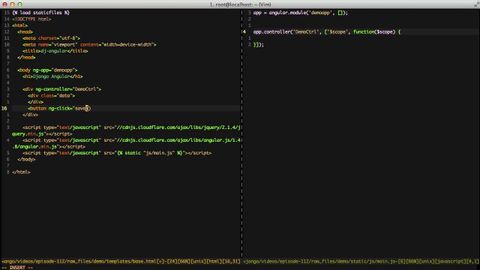
字幕與單字
Django和Angular基礎知識第1部分--基本的Angular應用 (Django and Angular Basics Part 1 - Basic Angular App)
00
kenneth 發佈於 2021 年 01 月 14 日收藏
影片單字
to
US /tu,tə/
・
UK /tə/
- adv.指向…點;至
- prep.附屬、連接的介係詞;比較的介係詞;指向;給予的介係詞;對…的反應;(用於動詞前;表示不定式);到…範圍;到;表達;放在動詞後的介係詞;去;然後;…和…;向;朝(某方向);(表示時間)直到...;聽的介係詞
- particle(不定詞)
A1 初級初級英檢
更多 set
US /sɛt/
・
UK /set/
- adj.準備好的;可以使用了的;固定的
- v.t.設定;確定;準備;佈置(桌面等);設定,設置;為(小說;舞臺等)設置背景;放置,使處於······位置;使處於(特定狀態);排版;建立;下定決心;譜曲;接骨
- v.i.凝固,固定的;落下;出發
- n. (c./u.)集合,一套;佈景;網球盤;收音機;電視機;決心
A1 初級多益初級英檢
更多 使用能量
解鎖所有單字
解鎖發音、解釋及篩選功能
